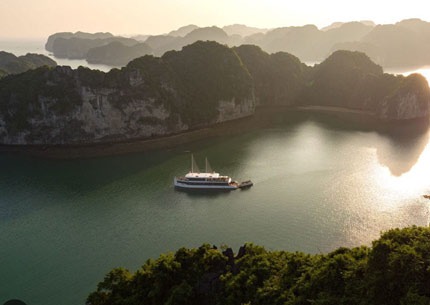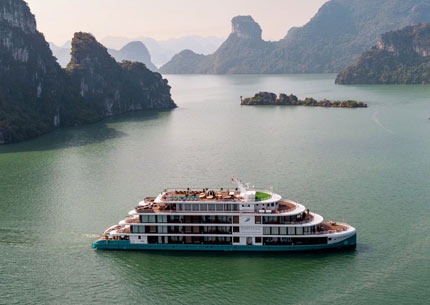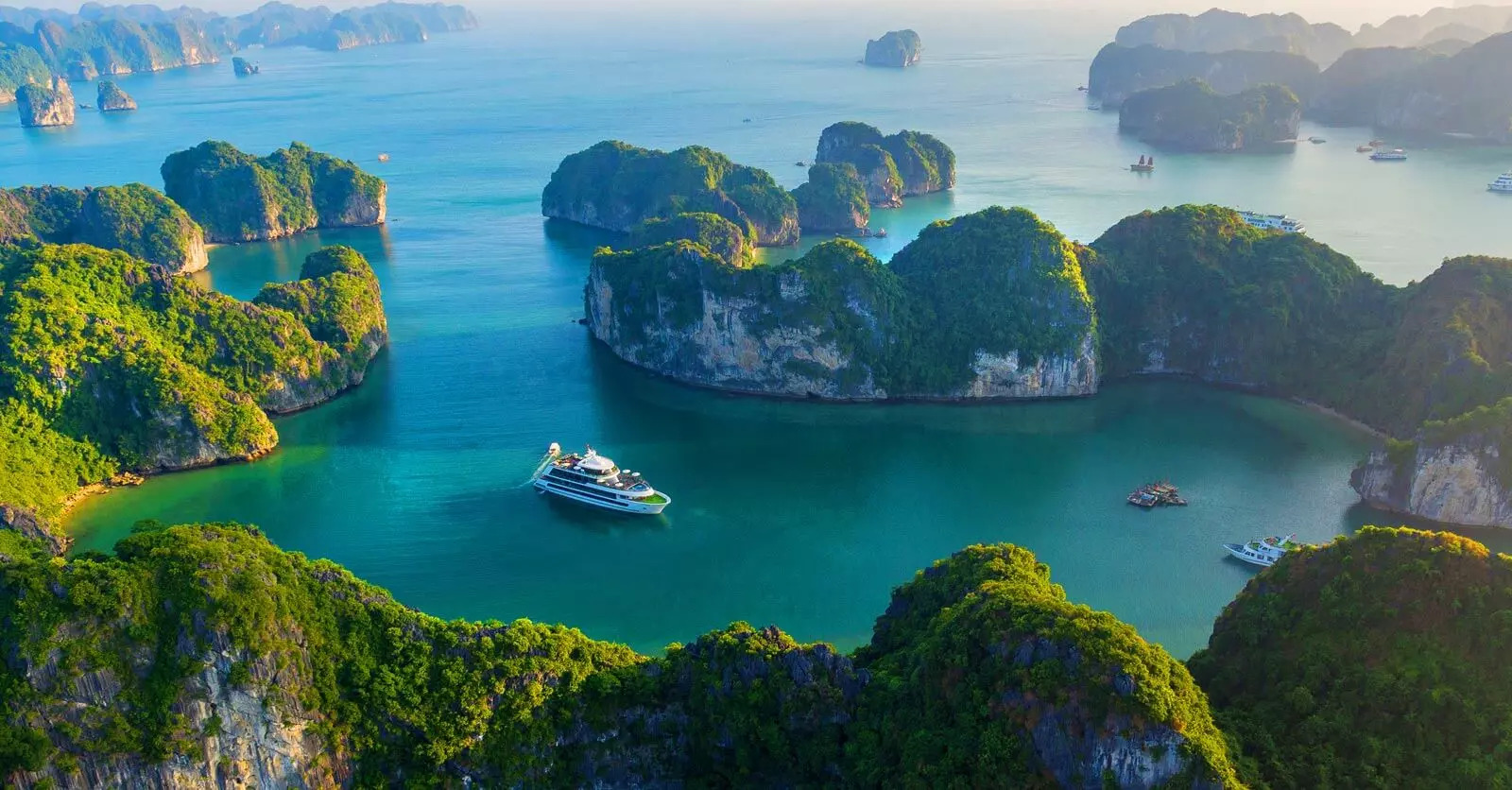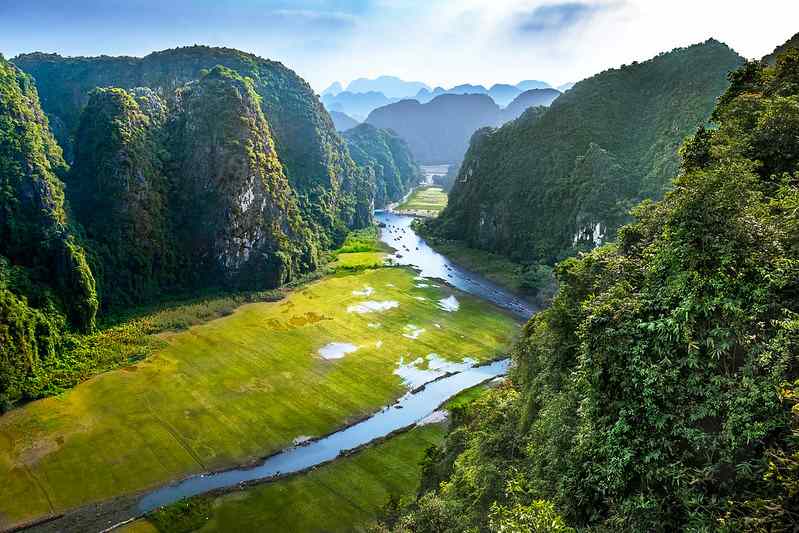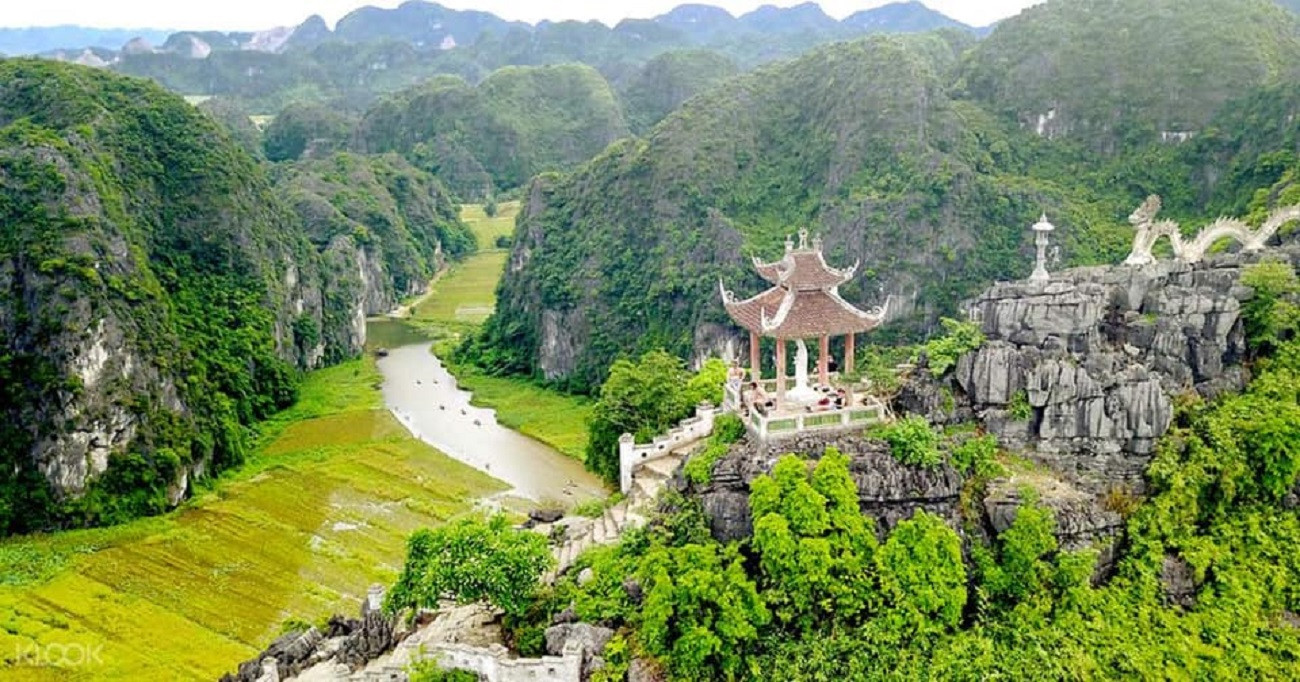Ancient Capital at Hoa Lu: 21 Must-See Treasures for Your 2025-2026 Vietnam Journey
Embark on a cultural odyssey through Vietnam’s first imperial seat, where ancient temples stand testament to a nation’s birth amidst breathtaking limestone karsts. Discover the perfect blend of history, spirituality, and natural beauty that has captivated travelers for centuries.
The Historical Significance of Hoa Lu: Vietnam’s First Political Center
Nestled approximately 100 kilometers south of Hanoi in the picturesque Ninh Binh Province, the Ancient Capital at Hoa Lu stands as a profound testament to Vietnam’s rich cultural heritage. This historic landmark served as the country’s first unified capital from 968 to 1010 CE, marking a pivotal moment in Vietnamese history when the nation emerged from centuries of Chinese domination.
Emperor Đinh Bộ Lĩnh, founder of the Đinh Dynasty, strategically established his power center here due to the area’s natural defensive advantages. Surrounded by imposing limestone mountains that served as natural fortifications, Hoa Lu represented not merely a political statement but a declaration of Vietnamese independence and identity.
Recent archaeological surveys conducted in 2024 have revealed that the original citadel complex spanned an impressive 3.5 square kilometers, significantly larger than previously estimated. This makes Hoa Lu one of the most expansive ancient capitals in Southeast Asia during its era, highlighting the architectural and engineering prowess of early Vietnamese civilization.
For history enthusiasts planning their 2025-2026 Vietnam itinerary, Hoa Lu offers an unparalleled opportunity to walk in the footsteps of the nation’s founding fathers. The site’s profound historical importance makes it a must-visit destination for anyone seeking to understand Vietnam’s journey from imperial beginnings to modern nationhood.
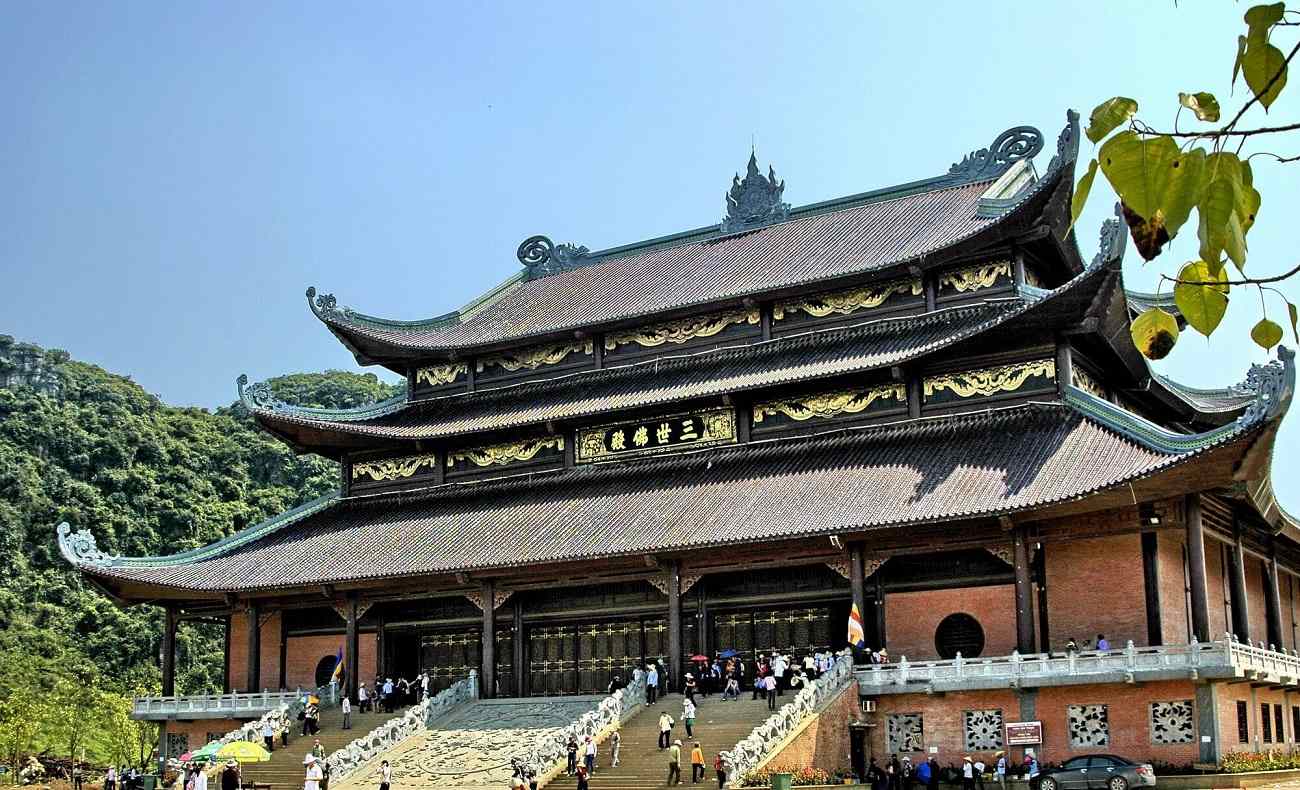
Journey Through Time: The Royal Dynasties of Hoa Lu
The Đinh Dynasty (968-980): Foundation of an Independent Vietnam
The Đinh Dynasty, though short-lived, laid crucial groundwork for Vietnamese sovereignty. Emperor Đinh Bộ Lĩnh, originally a local warlord, unified the country’s 12 feudal lords and proclaimed himself emperor in 968 CE. Historical records indicate he constructed an imperial citadel spanning approximately 140 hectares at Hoa Lu, establishing the first truly Vietnamese court system and administrative structure.
The emperor’s most significant achievement was securing diplomatic recognition from China’s Song Dynasty, effectively gaining acknowledgment of Vietnam as an independent state for the first time in history. This diplomatic coup was commemorated in a stone stele discovered in 2023, now displayed at the Hoa Lu Historical Museum.
The Early Lê Dynasty (980-1009): Consolidation and Cultural Flowering
Following Emperor Đinh’s assassination in 980 CE, General Lê Hoàn ascended to the throne, founding the Early Lê Dynasty. Under his 29-year rule, Hoa Lu witnessed significant cultural and religious development.
Emperor Lê Hoàn expanded the capital’s infrastructure, constructing seven major temples dedicated to Buddhist practice, of which archaeological evidence for five has been confirmed through excavations completed in 2024. He also successfully defended the young nation against Champa invasions from the south and continued diplomatic relations with China.
During this period, Hoa Lu became a center for scholarly pursuits, with historical records suggesting the establishment of Vietnam’s earliest formal educational institution, where Confucian classics and administrative principles were taught to future officials.
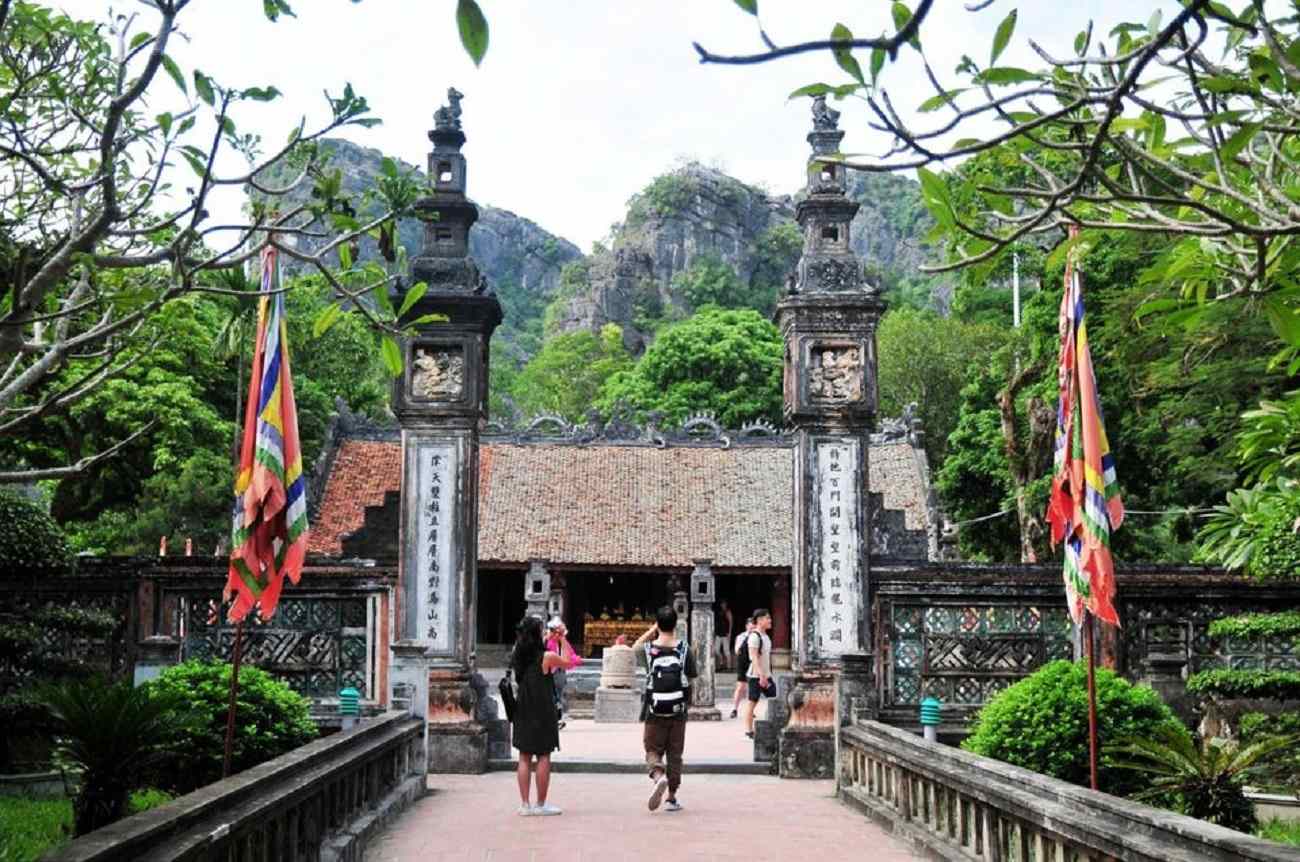
Exploring Hoa Lu’s Architectural Marvels in 2025-2026
Đinh Tiên Hoàng Temple: The Spiritual Heart of Ancient Vietnam
The Đinh Tiên Hoàng Temple stands as the most prominent religious structure in Hoa Lu, dedicated to Emperor Đinh Bộ Lĩnh. Though the current building dates primarily to the 17th century with significant renovations in the 19th century, it preserves the architectural essence of Vietnam’s imperial past.
The temple complex spans approximately 5 hectares and features three distinct courtyards arranged along a north-south axis, following traditional feng shui principles. The main ceremonial hall (Đại Đình) measures 15 meters in height with an impressive wooden frame supporting a clay-tiled roof adorned with dragon motifs.
Visitors in 2025 can appreciate the newly restored stone dragon steps leading to the main hall, featuring 52 intricately carved dragons representing the 52 ethnic groups of Vietnam. Inside, the central altar houses a statue of Emperor Đinh created using traditional lacquer techniques, measuring 2.5 meters tall and weighing approximately 600 kg.
The temple’s most precious artifact is the stone stele dating to 1118 CE, which chronicles the emperor’s achievements in ancient Vietnamese script. A 2024 digital translation project now allows visitors to read full translations via QR codes placed throughout the complex.
Lê Đại Hành Temple: Celebrating Vietnam’s Military Genius
Located just 300 meters from the Đinh Temple, the Lê Đại Hành Temple honors Emperor Lê Hoàn, whose military acumen secured Vietnam’s southern borders. The temple complex follows a similar architectural pattern but features distinctive elements reflecting Lê Hoàn’s military background.
The main ceremonial hall houses an impressive collection of ancient weapons, including 23 ceremonial swords used in annual rituals honoring the emperor. The temple’s eastern chamber displays a recently discovered map detailing Lê Hoàn’s successful military campaigns against the Champa kingdom, etched on copper plates estimated to be from the 12th century.
Architectural highlights include the temple’s 64 wooden columns carved with phoenix motifs, symbolizing the empress dowager who supported Lê Hoàn’s rise to power. The roof features double-layered eaves with 1,080 ceramic figurines depicting soldiers, court officials, and celestial guardians.
Nhat Tru Pagoda: Vietnam’s Ancient Buddhist Legacy
Often missed by casual visitors, Nhat Tru Pagoda is one of Vietnam’s oldest surviving Buddhist structures.
It dates back to the 10th century, during the Đinh Dynasty.
This modest pagoda houses Vietnam’s oldest stone Buddhist stele.
The central tower is 4.5 meters tall and features ancient Sanskrit inscriptions.
These inscriptions are nearly 100 years older than similar examples found elsewhere in Vietnam.
Preservation work, completed in early 2025, stabilized the structure.
A new protective enclosure now shields the inscriptions from weather damage.
Visitors can view the stele up close while ensuring its long-term protection.
Buddhist scholars see this site as especially important.
It reflects the early Indian Buddhist influence in Vietnam,
which came before the rise of Chinese Chan (Zen) Buddhism.
The pagoda grounds now feature a small museum.
It displays 17 newly discovered artifacts related to early Vietnamese Buddhism.
These include prayer beads, ceremonial bells, and manuscript fragments.
The Ancient Citadel Walls: Engineering Feats of Early Vietnam
Though much of Hoa Lu’s original citadel structure has been lost to time, significant portions of the defensive walls have been preserved or reconstructed based on archaeological evidence. The eastern wall section, excavated between 2022-2024, extends for 675 meters and reaches heights of up to 5 meters in some sections.
Engineering studies conducted in 2023 revealed that the walls incorporated advanced construction techniques for their time, including:
- A core of compacted earth reinforced with bamboo lattice
- An outer layer of locally quarried limestone blocks weighing up to 300 kg each
- A sophisticated drainage system to prevent erosion during monsoon seasons
- Strategic gate placements aligned with astronomical positions
Visitors in 2025 can walk along a newly constructed elevated pathway that follows the original wall perimeter, offering panoramic views of the surrounding karst landscape and rice fields. Information panels detail the defensive strategies employed by Hoa Lu’s imperial guards, including the use of moats, drawbridges, and observation towers.
Natural Splendor: The Geological Wonders Surrounding Hoa Lu
The Ancient Capital wasn’t chosen merely for defensive purposes—it also occupies one of Vietnam’s most geologically stunning locations. Hoa Lu sits within the Tràng An Landscape Complex, a UNESCO World Heritage Site renowned for its tower karst landscape interspersed with valleys, natural caves, and waterways.
The dramatic limestone formations surrounding the ancient capital rise to heights of 200-300 meters and create a natural amphitheater that amplifies the site’s historical significance. Geologists have identified over 40 distinct karst formations within a 5-kilometer radius of Hoa Lu, each with unique characteristics and mineral compositions.
This exceptional natural setting not only provided strategic advantages but also contributed to the spiritual significance of the location. Ancient Vietnamese beliefs held that such dramatic landscapes housed powerful spirits and deities, making Hoa Lu a nexus of both political and spiritual power.
For visitors in 2025, newly developed viewpoints at three strategic locations allow for breathtaking photographs of the ancient temples framed by these limestone giants. The most impressive view comes from the Ma Yen Mountain observation deck, accessible via a 486-step staircase that leads to Emperor Đinh’s tomb, offering a 360-degree panorama of the entire historical complex.
Cultural Immersion: Festivals and Traditions at Hoa Lu in 2025-2026
The Truong Yen Festival: Honoring Vietnam’s Imperial Founders
The Truong Yen Festival is Hoa Lu’s most important cultural event.
In 2025, it will take place from April 13 to 15.
This three-day celebration honors Emperors Đinh Bộ Lĩnh and Lê Hoàn.
The festival includes ceremonies, traditional performances, and historical reenactments.
It begins with a solemn procession of 108 ceremonial guards in historical costumes.
They carry imperial symbols like the golden dragon palanquin and royal seals.
The procession follows a 1.2-kilometer route from the ancient southern gate to the imperial temples.
Visitors can enjoy traditional court music performed on reconstructed 10th-century instruments.
The music features bronze drums, stone chimes, and bamboo flutes.
It follows ancient scores rediscovered in historical texts.
This is considered Vietnam’s oldest surviving musical tradition.
In 2025, the festival will debut a special night show titled “One Thousand Years of Light.”
The performance uses projection mapping on nearby limestone karsts.
It tells key stories from Hoa Lu’s history in a 45-minute visual and musical spectacle.
Traditional Vietnamese puppetry is combined with modern light effects.
The show celebrates the 1,055th anniversary of Đinh Bộ Lĩnh’s rise to the throne.
Traditional Craft Demonstrations: Living Heritage
Throughout 2025, Hoa Lu will host monthly craft demonstrations highlighting traditional Vietnamese artisanal skills that have roots in the imperial period. These include:
- Stone carving techniques used in temple construction
- Traditional lacquer application methods dating to the 10th century
- Bronze casting demonstrations showing how ceremonial objects were created
- Natural dyeing processes using plants mentioned in historical texts
- Silk weaving using patterns found on ancient tomb artifacts
Each demonstration is conducted by recognized master craftspeople, many of whom are designated as “Living National Treasures” by Vietnam’s cultural heritage authorities. Visitors can participate in hands-on workshops on selected days, creating simple crafts using ancient techniques.
Practical Travel Guide to Hoa Lu for 2025-2026 Visitors
Getting to Hoa Lu: Transportation Options
From Hanoi to Ninh Binh:
- Train: Regular services depart from Hanoi Railway Station to Ninh Binh, taking approximately 2 hours. The new express train introduced in late 2024 reduces travel time to just 90 minutes with comfortable seating and onboard amenities. Trains run hourly from 6:00 AM to 8:00 PM daily.
- Bus: Air-conditioned coaches depart from Giap Bat and My Dinh bus stations every 30 minutes between 6:00 AM and 6:00 PM. The journey takes approximately 2 hours depending on traffic conditions. The premium “Limousine Bus” service offers reclining seats and complimentary refreshments for a small additional fee.
- Private Car: For ultimate convenience, private car services can be arranged through your accommodation or via ride-sharing apps. The journey follows the upgraded National Highway 1A with a distance of 98 kilometers.
From Ninh Binh to Hoa Lu:
- Taxi: Numerous taxis are available at Ninh Binh station, with the journey to Hoa Lu taking approximately 20 minutes and costing 150,000-200,000 VND (approximately $6-8 USD).
- Motorbike: Motorbike rentals are available in Ninh Binh town from 100,000 VND per day (approximately $4 USD). The route to Hoa Lu is well-marked and passes through scenic countryside.
- Electric Shuttle: New for 2025, eco-friendly electric shuttles operate between Ninh Binh town and major attractions including Hoa Lu. These depart every 30 minutes from 7:00 AM to 5:00 PM and cost 50,000 VND (approximately $2 USD) per person.
For the ultimate luxury experience in northern Vietnam, consider combining your Hoa Lu visit with a premium cruise through Halong Bay, where limestone karsts similar to those surrounding Hoa Lu emerge dramatically from emerald waters.
Accommodation Options Near Hoa Lu
Many travelers visit Hoa Lu on a day trip from Hanoi.
However, staying in the Ninh Binh area offers a more relaxed experience.
You can visit early in the morning or late in the afternoon, avoiding large tour groups.
Luxury Options:
Emeralda Ninh Binh Resort & Spa is just 5 kilometers from Hoa Lu.
This 5-star resort features traditional Vietnamese architecture.
It offers 121 spacious villas surrounded by lush gardens.
Guests can enjoy cultural programs, including evening performances of imperial court music.
Tam Coc Garden Resort is a boutique property with 16 elegant bungalows.
The bungalows are built using local materials and blend into the natural setting.
Their “Ancient Capital Package” includes a private tour of Hoa Lu with a historian.
It also features traditional dinners inspired by royal Vietnamese cuisine.
Mid-Range Options:
Ninh Binh Hidden Charm Hotel is located in Ninh Binh town.
It offers 45 comfortable rooms and reliable transport to Hoa Lu and nearby attractions.
Hoa Lu Homestays are within 2 kilometers of the ancient capital.
These family-run stays offer authentic experiences in traditional homes.
Guests often enjoy home-cooked meals and cultural activities.
Budget Options:
Chezbeo Homestay is a popular choice for backpackers.
Dormitory beds start at 150,000 VND (about $6 USD).
Bicycle rentals are included for exploring the area.
Nguyen Shack Ninh Binh features eco-friendly bamboo bungalows.
Prices start at 600,000 VND (about $24 USD) per night.
The stay includes breakfast and guided morning tai chi sessions.
Visiting Hours and Entrance Fees for 2025
Operating Hours:
- High Season (March-October): 7:00 AM to 6:00 PM daily
- Low Season (November-February): 7:30 AM to 5:30 PM daily
- Closed during morning hours (8:00-10:00 AM) on the 1st and 15th day of each lunar month for special ceremonies
Entrance Fees:
- Individual temples: 20,000 VND (approximately $0.80 USD) per person per temple
- Combined ticket (all attractions within Hoa Lu): 100,000 VND (approximately $4 USD)
- Audio guide service available in 8 languages: 50,000 VND (approximately $2 USD)
- Guided tours with certified historical guides: 300,000 VND (approximately $12 USD) for groups up to 5 people
Photography:
- Standard photography: Included with entrance ticket
- Professional photography/filming permit: 500,000 VND (approximately $20 USD)
- Drone photography: Currently prohibited to protect the site’s historical integrity
Essential Tips for an Enriching Hoa Lu Experience
- Best Visiting Times: Arrive early (7:00-9:00 AM) or late (after 3:30 PM) to avoid large tour groups that typically visit midday.
- Appropriate Attire: As Hoa Lu includes active religious sites, modest clothing is recommended. Visitors should cover shoulders and knees when entering temple buildings out of respect for local customs.
- Seasonal Considerations: The most comfortable months to visit are March-May and September-November when temperatures range from 22-28°C (72-82°F) with moderate humidity. Summer months (June-August) can be extremely hot and humid with temperatures reaching 35-38°C (95-100°F).
- Photography Tips: The most captivating light for photography occurs during the “golden hours” shortly after sunrise or before sunset when the limestone karsts are dramatically illuminated. The lotus pond in front of Đinh Temple offers perfect reflective photos during early morning hours.
- Local Etiquette: When visiting temples, observe these respectful practices:
- Remove shoes before entering inner sanctums
- Do not touch altars, statues, or religious artifacts
- Speak quietly inside temple buildings
- Ask permission before photographing people engaged in worship
- Accessibility Notes: While improvements have been made for 2025, some areas of Hoa Lu remain challenging for visitors with mobility limitations. The main temples have ramp access, but pathways between sites include uneven terrain and steps. The newly introduced electric cart service can assist visitors between major sites for a fee of 70,000 VND (approximately $3 USD).
Beyond Hoa Lu: Creating Your Perfect Ninh Binh Itinerary
Trang An Landscape Complex: UNESCO Heritage Within Reach
Located just 7 kilometers from Hoa Lu, the Trang An Landscape Complex offers an exceptional complement to your historical exploration. This UNESCO World Heritage Site features boat tours through a network of cave tunnels and valleys that showcase the region’s geological wonders.
The standard boat route traverses 9 caves and 3 cultural sites over a 3-hour journey, with local rowers navigating traditional sampans through narrow passages and emerald waterways. The longest cave passage, Hang Toi (Dark Cave), extends for 320 meters and requires passengers to duck as the boat glides through its limestone corridors.
The newly opened Route 5 (inaugurated in December 2024) includes visits to film locations from the Hollywood blockbuster “Kong: Skull Island” and passes through the impressive Hang Mua Cave with its 150-meter passage adorned with natural limestone formations.
For the ultimate northern Vietnam experience, consider combining your exploration of these limestone landscapes with a luxurious 2-day cruise through Halong Bay and Lan Ha Bay, where similar karst formations create one of the world’s most stunning seascapes.
Tam Coc: Vietnam’s “Inland Halong Bay”
Often called “Halong Bay on land,” Tam Coc provides another perspective on Ninh Binh’s dramatic landscape. Located just 5 kilometers from Hoa Lu, this area is famous for its boat tours along the Ngo Dong River, passing through three natural limestone caves.
The boat journey covers approximately 7 kilometers and takes about 2 hours, with local rowers often using their feet to navigate the sampans through narrow passages. The largest cave, Hang Ca, extends for 127 meters and reaches heights of 20 meters inside.
What makes Tam Coc particularly special is the seasonal transformation of the surrounding landscape. From May to July, the rice fields flanking the river turn a brilliant emerald green, while October brings golden hues as the rice ripens before harvest.
Bai Dinh Pagoda: Asia’s Largest Buddhist Complex
For those interested in religious architecture, the Bai Dinh Pagoda complex offers a fascinating contrast to Hoa Lu’s ancient temples. Located 15 kilometers from the ancient capital, this modern Buddhist complex was completed in 2014 but follows traditional architectural principles on a grand scale.
The complex spans an impressive 539 hectares and includes several record-breaking features:
- The largest bronze Buddha statue in Southeast Asia, standing 10 meters tall and weighing 100 tons
- A corridor lined with 500 arhats (enlightened disciples) carved from stone
- The largest bronze bell in Vietnam, weighing 36 tons and standing 4.9 meters tall
- A seven-story pagoda offering panoramic views of the surrounding landscape
Electric cars transport visitors around the vast complex for 30,000 VND (approximately $1.20 USD), making it accessible for all ages and mobility levels.
Mua Cave Viewpoint: The Ultimate Panoramic Experience
For photography enthusiasts and those seeking spectacular vistas, the Mua Cave Viewpoint (Hang Mua) provides the region’s most breathtaking panorama. Located 7 kilometers from Hoa Lu, this site features a steep staircase of 486 steps leading to a summit overlooking the entire Tam Coc area.
The climb takes approximately 30-45 minutes depending on fitness level, but the reward is worth the effort: a 360-degree view encompassing winding rivers, rice fields, and limestone peaks stretching to the horizon. The summit features a small dragon temple and several strategically placed viewing platforms ideal for photography.
For the most magical experience, time your visit for sunrise or sunset when changing light conditions create dramatic shadows and colors across the landscape. Early morning visits (before 8:00 AM) also help avoid crowds and the midday heat.
Planning Your Extended Northern Vietnam Adventure
Many travelers find that Hoa Lu serves as an excellent starting point for a broader exploration of northern Vietnam’s cultural and natural treasures. For a comprehensive northern Vietnam experience, consider this itinerary:
Day 1-2: Explore Hanoi’s Old Quarter and historical sites
Day3: Travel to Ninh Binh, visit Hoa Lu Ancient Capital
Day 4: Explore Trang An Landscape Complex and Bai Dinh Pagoda
Day5-7: Journey to Halong Bay for a 3-day luxury cruise experience through the iconic limestone islands
Day 8-10: Visit Sapa for mountain trekking and ethnic minority village experiences
This comprehensive itinerary captures the essence of northern Vietnam’s diverse attractions, from ancient capitals to natural wonders. While exploring Halong Bay, premium cruise options offer an ideal balance of comfort and adventure, allowing you to experience the region’s limestone seascapes in style.
Preserving the Past: Conservation Efforts at Hoa Lu in 2025-2026
Vietnam’s cultural authorities are actively preserving the ancient capital of Hoa Lu.
The 2023–2025 Hoa Lu Heritage Preservation Project introduced several key measures.
Climate Monitoring Systems track temperature, humidity, and air quality.
These sensors help protect wooden structures and ancient artifacts from decay.
Rainwater Management has been improved with a modern drainage system.
It can handle up to 150 cubic meters per hour, protecting the foundations during heavy monsoon rains.
Visitor Impact Management limits daily visitors to 1,500 people.
This prevents overcrowding and reduces wear on historic structures.
Digital Documentation has created a full 3D laser scan of the entire complex.
The model is accurate within 2 millimeters and supports both conservation and education.
Community Engagement plays a key role in the project.
Local residents help maintain the site and offer cultural demonstrations.
This creates sustainable jobs and keeps traditional knowledge alive.
Visitors help support these efforts through their entrance fees.
30% of ticket revenue is dedicated to preservation projects.
Conclusion: Why Hoa Lu Deserves a Place on Your 2025-2026 Vietnam Itinerary
The Ancient Capital at Hoa Lu is more than just a collection of historic buildings. It represents the very birth of Vietnamese national identity.
Walk the same paths once taken by emperors and officials over 1,000 years ago, and uncover the roots of Vietnamese culture.
Hoa Lu stands out for its rare blend of history, architecture, spirituality, and natural beauty.
Few places in Southeast Asia offer such a perfect mix of heritage and landscape.
With improved access and new cultural experiences planned for 2025–2026, Hoa Lu is more welcoming than ever.
Whether you love history, culture, photography, or just exploring, this ancient capital has something special to offer.
Pair your visit with a luxury Halong Bay cruise to complete your northern Vietnam adventure.
There, similar karst formations create one of the world’s most iconic natural wonders.
By experiencing both Hoa Lu and Halong Bay, you’ll discover the deep connection between Vietnam’s landscapes and its cultural identity.
It’s a relationship that has inspired Vietnamese poetry, art, and spiritual practice for over a thousand years.
- Hotline | WhatsApp: +84.978.358.422
- Phone | WhatsApp: +84.962.261.687
- Email: halongbayluxcruises@gmail.com
- vietnammarveltravel@gmail.com





